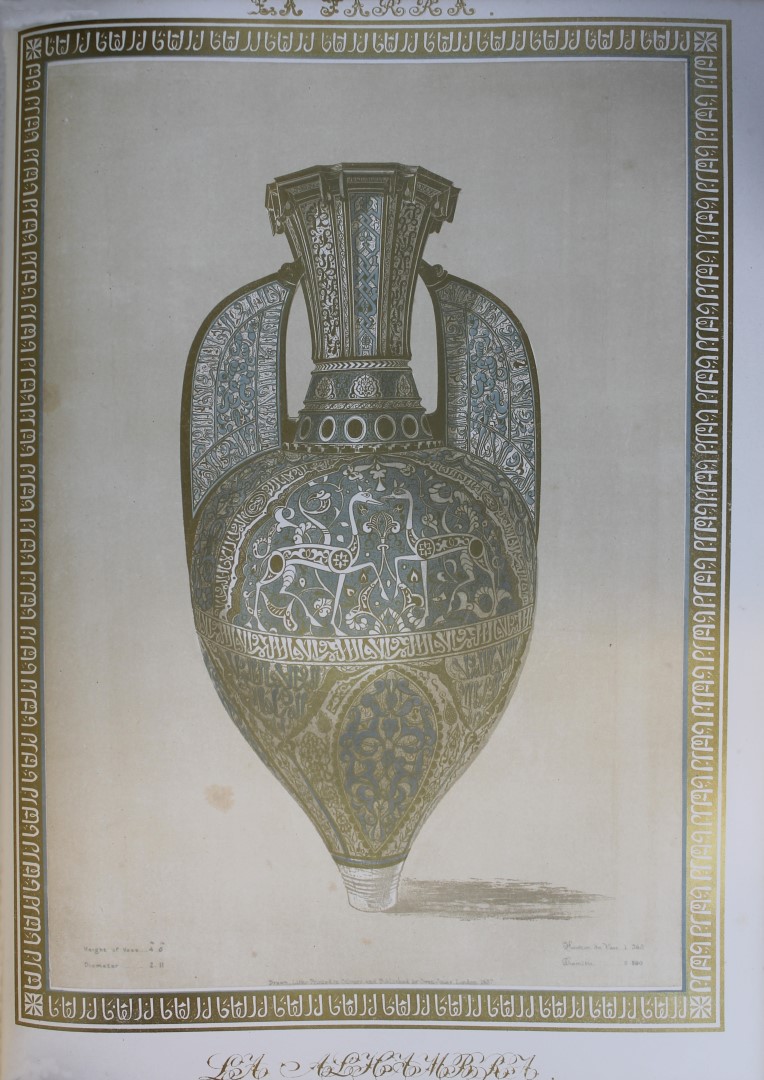Plans, Elevations, Sections and Details of The Alhambra: From Drawings Taken on The Spot In 1834 by The Late M. Jules Goury and in 1834 and 1837 By Owen Jones, Archt. With a Complete Translation of The Arabic Inscriptions and An Historical Notice of The Kings of Granada, from The Conquest of The City by The Arabs to The Expulsion of The Moors, by Mr. Pasqual de Gayangos. TWO VOLUMES.
Jones, Owen.
Synopsis
The first published work to include chromolithograph printing. Large paper copy of the first edition of this highly detailed and beautifully produced work. The lithographs printed in colour are extremely important in their own right as early experimental examples of the chromolithographic process that dominated colour reproduction for most of the second half of the 19th century. These, together with an excellent text, add an additional and valuable dimension to this work as an important historical record of this Moorish jewel in early 19th century, at least twenty years before the first detailed photographic records were made.
An unusually good copy of a work which, because of its weight of some 26 kg, is often found in poor condition. It can be described without exaggeration as monumental, not just for its size, but as a milestone in English colour printing being one of the first to use the technique of chromolithography. Furthermore, it is a monument to the determination of its authors: Jules Goury, who died of cholera at Granada in 1836, while preparing the original drawings and Owen Jones, on his return to England in 1835, was faced with the complicated task of finding a printer capable of carrying out the work. He finally resolved to set up his own printing press; the colour plates demanded up to seven pressings and nearly nine years of experimentation passed before the work was successfully accomplished. In his employment of flat colours Owen Jones anticipated the works of William Morris, the Pre-Raphaelites and the Art Nouveau movement in France.
Bibliographic references: Palau 106 445. Alberich 1491. Cresswell 357. Abbey Travel 156. Courtney Lewis pp.139 – 140. Tesoros de España 124.








